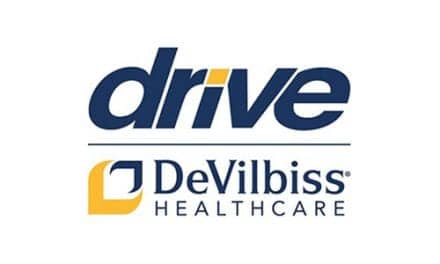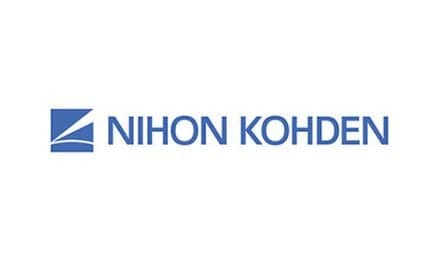Cutting costs with simpler, more accurate screening tools may be the key to survival.
The problems presented by sleep disorders are enormous. The prevalence of sleep- disordered breathing (SDB) has been estimated at 2 percent among women and 4 percent among men1 (roughly half the incidence of asthma). More than 10 percent of the US population complains of chronic insomnia.2 The prevalence of narcolepsy has been estimated at 0.05 percent3 of the population of Northern California, greater than the incidence of multiple sclerosis, a disease that appears to attract much more attention. Periodic leg movements of sleep (PLMS) is also relatively common, particularly among the elderly. Clearly, sleep problems are extremely common.
Sleep problems can also be relatively expensive to diagnose and treat. The traditional approach involves a careful office evaluation followed by 1 or more nights of polysomnography at a true cost (not charge) of $600 to $700. Treatment of SDB generally relies on relatively expensive equipment (continuous positive applied pressure, or CPAP) for which long-term compliance remains uncertain; a custom-made (and, thus, expensive) dental appliance; or surgery that often does not work. In the age of managed care, the intersection of high prevalence and high cost is a dangerous place to be.
To better utilize scarce and expensive resources, two approaches are possible: First, we could try to develop better clinical tools to screen for sleep disorders to better determine which individuals really need a full sleep study; second, we could try to perform simpler or more automated sleep studies to decrease expenses.
WHO NEEDS A SLEEP STUDY?
For SDB, responsible for about 75 percent of all polysomnographic studies ordered, the key symptoms are snoring, which is very common, and daytime somnolence, which is vague. It is therefore not surprising that most studies to predict SDB based on clinical examination alone have been disappointing. In a typical recent study,4 patients who were not very sleepy (those with an Epworth sleepiness score less than or equal to 12) and not morbidly obese (a body mass index less than or equal to 28) were unlikely to have sleep apnea, but this represented fewer than 10 percent of the patients awaiting polysomnography.4 Thus, very few patients could be spared the expense of polysomnography based on these clinical criteria. My own attempts to use a neural network to analyze clinical variables had very similar results.5 It is impossible to accurately predict SDB based on a patient history and physical alone.
For some patients, home recording of nocturnal oximetry can be useful. Although this will not screen for other causes of daytime somnolence, including narcolepsy, upper airways resistance syndrome, and PLMS, a normal study is able to reasonably exclude severe SDB.6 More elaborate home studies of breathing during sleep may be slightly better, but any study that requires significant technician time may not be cost-effective. Any attempt at home to accurately record sleep, which requires good electroencephalogram, electromyogram, and eye movement recordings, will require technician attendance. An attended home study cannot be cost-effective compared to a lab setting where one technician can monitor two or three patients.
CAN SDB BE DIAGNOSED AND TREATED THE SAME NIGHT?
In some patients with obvious and severe SDB, it may be possible to diagnose the disease within the first 2 hours of recorded sleep and spend the rest of the night titrating CPAP therapy (a split-night study). There is some concern that the first few hours of sleep may not be representative of the entire night as there are changes in sleep and, therefore, a 2-hour study will not accurately chart SDB throughout the night. However, many times the apnea is obvious early on, so the exact quantification is not clinically important. More disturbing is the possibility that there might not be adequate time during the night to diagnose and optimally treat patients. To both diagnose and initiate treatment in 1 night requires a great deal of patient education in a relatively short time.
My preference is to do a thorough polysomnogram for diagnosis, discuss the findings and the implications of the diagnosis with the patient in the office, then, if appropriate, schedule a night for CPAP. My experience suggests patient compliance is substantially better with this approach than after a split-night study.1 This, of course, is a more expensive approach.
SCORING SLEEP STUDIES
The rules for scoring sleep are the result of a 19688 consensus among experts. During the past 30 years, little has changed. Scoring a sleep study requires making subjective decisions about each 30-second “epoch” of sleep or wake over the 7- or 8-hour sleep period observed. This requires a substantial amount of time (2 to 3 hours) for a trained scorer, and makes traditional polysomnography inherently expensive.
Tools now available include fast, inexpensive computers, which offer efficient information storage and retrieval. This alone can cut costs. Several vendors also offer computerized sleep and respiratory scoring software, but it is not reliable without a great deal of input from a trained scorer. Simply plugging in a computer and doing sleep studies using default parameters yields fairly useless data, but computers are invaluable for digitally storing large amounts of data and generating reports, and I cannot imagine running a sleep center without them. Efforts to develop reliable computerized sleep staging9 are still imperfect but hold promise for reducing personnel costs in the future.
IS SLEEP MEDICINE COST-EFFECTIVE?
In the era of managed care, health care practitioners must constantly prove to payors that our practices justify expenses. Clearly, there is evidence that the costs of sleep disturbances to the American public are great, running in the tens of billions of dollars each year.10 The question is, can we reduce costs through treatment?
It is generally agreed that SDB causes excess mortality. One study by He et al11 suggests that mortality for men over age 50 with untreated sleep apnea approaches 50 percent at 8 years. Assuming treatment with nasal CPAP reduces this by even 50 percent, at least 5 years of life might be gained by treating a 50-year-old man. If, for argument’s sake, diagnosis (two office visits, two polysomnograms) costs $2,500, and treatment (CPAP and supplies, yearly office visits for 5 years) costs $2,500, 5 years of life might be gained at a cost of $5,000. Since our clinical prediction of sleep apnea is not very good, one might assume one has to do two polysomnograms to find one case of sleep apnea, increasing the cost per case by perhaps $1,000. This still leaves a rough calculation of $6,000 for 5 years of life saved, for a cost-effectiveness of $1,200 per year of life saved-an extremely low number. Any value less than $50,000 per year of life saved is generally considered cost-effective.
CONCLUSION
Health care practitioners treating patients with sleep disorders should not feel defensive about the general perception that such treatments are expensive. As anyone involved in the care of sleep-disordered patients knows, it is extremely gratifying when one is able to effectively treat these individuals. Although some of the technology is inherently expensive, it may be possible for us to reduce costs in the future by making more efficient use of the equipment. One thing is certain: The price we pay as a society by not treating sleep disorders is much greater than the cost of treatment.









